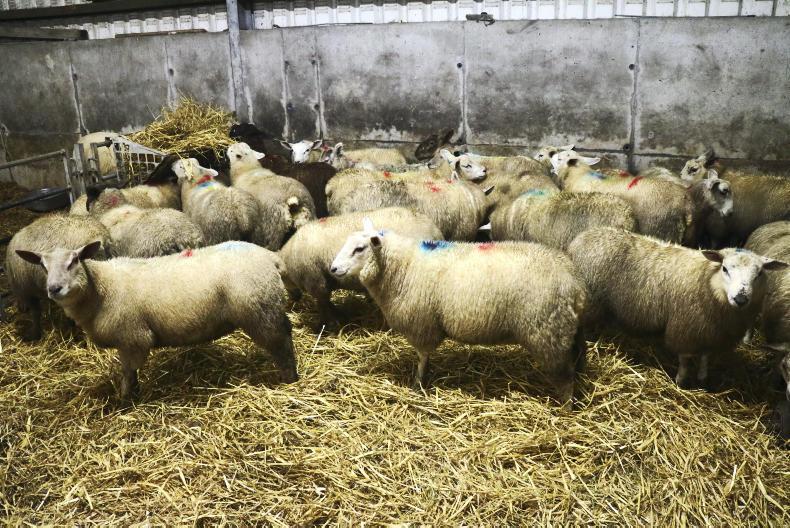Marketing hoggets
Some factories report a significant increase in the average weight of hoggets being slaughtered. Retaining hoggets to excessive weights ends up costing you considerably with no return for producers from the extra free meat entering the system while out-of-spec sheep can limit sales.
The situation was particularly challenging last spring where hoggets were backed up in the hope of an anticipated price rise, which in turn affected the spring lamb trade. Hoggets can perform excellently where offered an intensive finishing diet and therefore should be weighed regularly and drafted at the correct weight and fat score. There is firm demand in marts for ewe hoggets with breeding potential so this is an alternative outlet that can be considered for heavy sheep fitting into this category.
Factories are also cautioning farmers to move hoggets before they set their first two permanent teeth as this will downgrade their value. Another issue to be mindful of is ewe hoggets being presented in lamb. Where pregnancy is suspected, hoggets should be scanned first. Some factories warn that if pregnant hoggets are presented for slaughter that are advanced in lamb they will be downgraded to ewe value.
Soil fertility
Following on from last week’s sheep feature on soil fertility, the point was made at the lowland sheep conference in Kilkenny that significant money is being wasted each year in applying fertiliser without any information on soil fertility. David Wall of Teagasc highlighted that upwards of €300/t is spent on fertilisers so a soil test costing 50c to €1/acre annually is money well spent to ensure optimum value is being achieved.
A question also arose with protected urea as to whether the same limitations apply around the time frames for applying urea and lime. The advice is to wait at least three months after liming before applying lime or slurry and to wait 10 days after slurry or urea is applied before applying lime. David said research is still ongoing but that all tests so far show no such limitations with protected urea.
Sheep handling
A new guide to designing a sheep handling unit compiled by Teagasc business and technology adviser Edward Egan was launched at the Teagasc sheep conference in Kilkenny last Thursday. The guide is available to view and download for free on the Teagasc website.
It contains valuable information on designing a new handling unit and also contains advice where existing units are being upgraded. Edward has an extensive knowledge in sheep production and the guide provides lots of practical and easy-to-implement tips for a range of handling options.
Dates for diary: The Teagasc hill sheep conference takes place on Wednesday 19 February in Jacksons Hotel, Ballybofey, Co Donegal, starting at 6pm. Tick-borne diseases, which are growing in concern, will be addressed along with a presentation on the sustainability and public good provision of hill sheep farms. There will also be a focus on strategies for maintaining high-nature-value farmlands, with presentations and a panel discussion from specialists who have successfully implemented programmes in different parts of Ireland.






 This is a subscriber-only article
This is a subscriber-only article










SHARING OPTIONS: